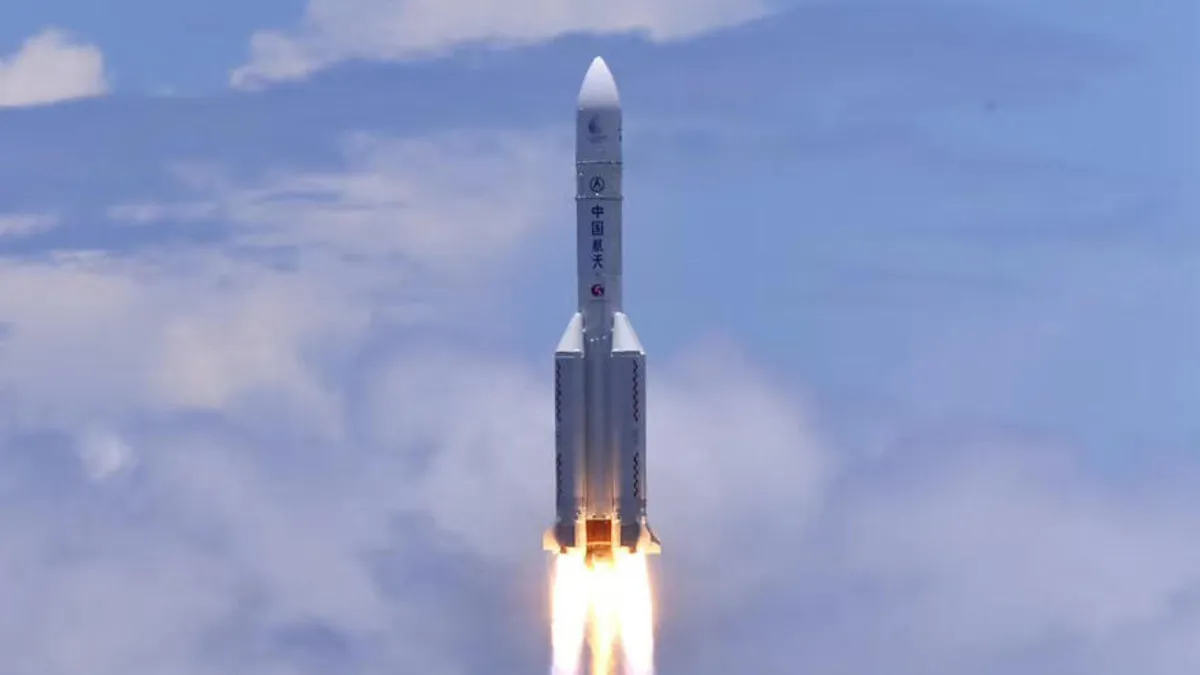China’s covert space plane, a “reusable experimental spacecraft,” has safely returned to Earth following an eight-month mission in orbit. The spacecraft, which launched last December, is part of China’s ongoing efforts to advance space technology and compete with the United States in the realm of reusable spacecraft.
Mission Details and Significance
The spacecraft’s return was announced by state news agency Xinhua on September 6, describing the mission as a “complete success.” This mission follows the December 2022 launch of the US military’s Boeing X-37B, another uncrewed space plane. The Chinese spacecraft’s mission lasted approximately 268 days, making it one of the longest-duration flights for such a vehicle.
The precise identity and capabilities of the Chinese spacecraft remain classified. Observers suspect it is the “Shenlong” space plane, which has been under development for two decades, though China has not confirmed this or provided detailed information about its functions.
Understanding Space Planes
Space planes, unlike traditional spacecraft, combine features of both airplanes and spacecraft. They can operate in Earth’s atmosphere and in space, offering versatility for a range of missions. Both China’s spacecraft and the US X-37B are launched into space by rockets and land on runways, a design intended to facilitate reuse and operational flexibility.
Space planes are valued for their potential to carry out various missions in orbit and advance reusable spacecraft technology, which could become crucial for regular human space travel in the future. US Space Force chief of operations Gen. Chance Saltzman has highlighted the strategic advantage of being able to put a spacecraft in orbit, conduct missions, and return it to Earth for analysis.
Chinese Space Plane Program
China has maintained a high level of secrecy about its space plane program. Since the spacecraft’s initial launch in 2020, there has been limited public information available. A video announcing the spacecraft’s return featured a banner stating the technology was “too advanced to be shown.”
The purpose of the spacecraft remains unclear, although it is suspected to be the Shenlong space plane. Other Chinese space plane projects have been publicly described as civilian, but the official use of Shenlong remains unconfirmed. Analysts suggest that the spacecraft could have applications for inspecting space assets or clearing space debris, though it could also be used for more controversial purposes.

Military and Strategic Implications
The development of space planes is part of a broader trend of nations enhancing their space capabilities, including potential counterspace technologies. While China has officially stated that its space plane is intended for peaceful purposes, analysts believe that the technology could have dual-use applications, including potential military or counterspace uses.
Clayton Swope of the Aerospace Security Project at the Center for Strategic and International Studies points out that any advancements made in space plane technology could benefit China’s counterspace capabilities. The skills and technologies developed for space planes could potentially be adapted for military purposes.
Comparison with US X-37B
Comparing China’s space plane with the US X-37B is challenging due to the secrecy surrounding both programs. The X-37B has been operational for longer and has completed missions lasting up to 908 days. It is described by the US Space Force as a reusable spacecraft conducting technology experiments to advance next-generation capabilities.
The X-37B’s missions include tests in new orbital regions, space domain awareness technologies, and investigating the effects of space on various materials. Like the Chinese spacecraft, the X-37B has been involved in deploying small satellites, which some observers speculate could be related to covert or offensive technologies.
Conclusion
China’s successful return of its space plane underscores its growing capabilities in space technology and its competitive stance with the US. The development and deployment of space planes by both nations highlight the strategic importance of space as a domain for technological advancement and potential military applications.















